Shelling at nuclear power plant as Russia scrambles to fortify Crimea peninsula and Ukraine closes in
The UN’s atomic watchdog has sounded the alarm over “powerful explosions” at the Zaporizhzhia nuclear plant as Ukraine warned Russia has put the “word at risk”. Warning: Graphic.
World
Don't miss out on the headlines from World. Followed categories will be added to My News.
Kyiv and Moscow on Sunday have accused each other of shelling parts of the Zaporizhzhia nuclear power plant that Russia controls in southern Ukraine.
The UN atomic watchdog that has a team of experts at the plant — the biggest nuclear facility in Europe — said “powerful explosions” had occurred on Saturday and Sunday.
Kyiv “does not stop its provocations aiming at creating the threat of a man-made catastrophe at the Zaporizhzhia nuclear power plant”, the Russian army said in a statement on Sunday, local time.
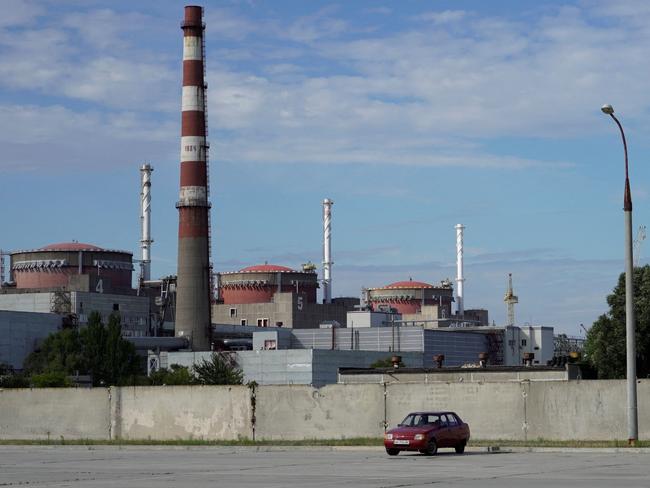
Despite the shelling, radiation levels “remain normal”, the army added. It said missiles exploded around a power line that feeds the plant, the fourth and fifth power units and “special building number 2”.
Renat Karchaa, an advisor to the Russian nuclear agency Rosatom, told state-run agency TASS that the “special building” contained nuclear fuel.
Ukrainian nuclear energy agency Energoatom said shortly after that Russia was behind the explosions.
“This morning on November 20, 2022, as a result of numerous Russian shelling, at least 12 hits were recorded on the territory of the Zaporizhzhia nuclear power plant,” Energoatom said.
It accused Russia of “once again … putting the whole world at risk”.
“The news … is extremely disturbing. Explosions occurred at the site of this major nuclear power plant, which is completely unacceptable,” UN atomic watchdog chief Rafael Grossi said in a statement.
He added that the damage to buildings, systems and equipment recorded so far was not “critical”.
The explosions were “abruptly ending a period of relative calm at the facility and further underlining the urgent need for measures to help prevent a nuclear accident there”, the statement read.
Moscow and Kyiv have traded blame for months over shelling near the Russian-held facility, sparking fears of a nuclear disaster and spurring calls to demilitarise areas around atomic facilities in Ukraine.
RUSSIA ANNEXES CRIMEA
Russia said it was strengthening positions on the Crimean peninsula as Ukraine’s forces reclaim territory in the neighbouring Kherson region.
Moscow annexed Crimea in the wake of nationwide pro-democracy demonstrations that led to the ouster of Ukraine’s former Kremlin-friendly president in 2014.
The peninsula was used as a launching pad for Russia’s invasion of Ukraine, with Moscow’s troops pushing north and swiftly capturing towns and cities in southern Ukraine.
“Fortification work is being carried out on the territory of Crimea under my control with the aim of guaranteeing the security of all Crimeans,” the Moscow-appointed governor of the region, Sergei Aksyonov, said.
He added that the military and law enforcement were already working in such a way to make sure Crimeans “feel safe”.
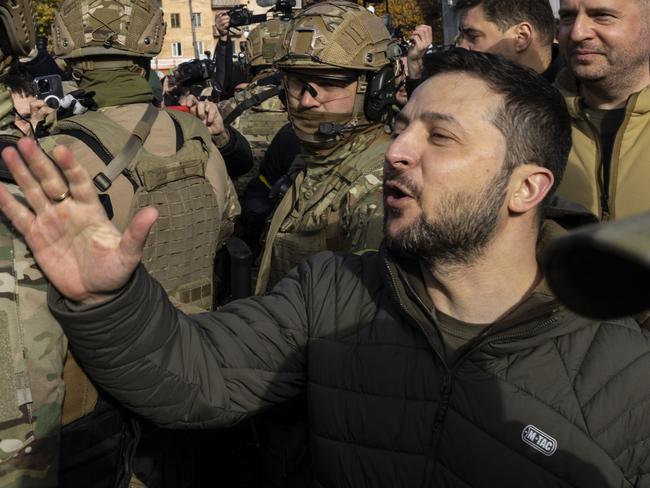
His announcement comes as Ukraine forces in recent months have been pushing a counteroffensive in the south towards Crimea and last week reclaimed Kherson, the capital of the bordering the annexed peninsula.
Ukraine President Volodymyr Zelenskyy has said his forces intend to recapture the peninsula as well.
There have been several explosions at or near Russian military installations in Crimea since February, including a co-ordinated drone attack on a key Russian naval port at Sevastopol.
In October, the Kerch bridge connecting the peninsula to the Russian mainland was partially destroyed in an attack attributed to Ukraine by Moscow.
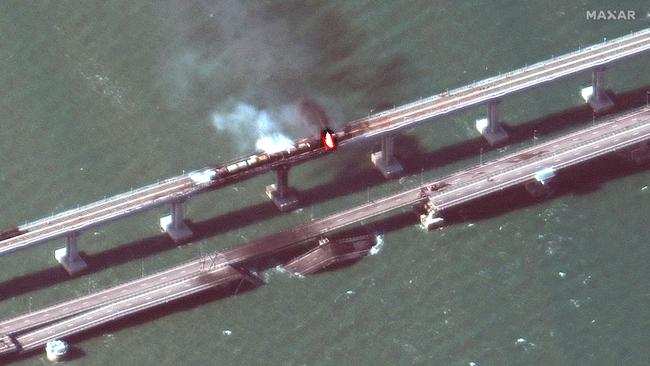
The deputy head of the Kherson region Sergiy Khlan announced Friday that Kherson city’s rail link was being restored with a first train leaving later in the day.
With electrical and water supplies cut to the city following the destruction of key utilities by the retreating Russians, residents moved fast to stockpile basic supplies in the southern Ukrainian city.
The Ukraine presidency said it was doing everything possible to improve conditions in Kherson and that neighbouring territories, also battered by Russian forces, would aid the liberated territory.
“Our people there need a lot of help. Russians not only killed, mined but also robbed towns and cities. There is nothing left there in fact,” the deputy head of the presidency Kyrylo Tymoshenko said.
Russia claimed to have also annexed the Kherson region along with three more in September, vowing to defend them with all available military means.

Russia has responded with a fresh barrage of missile and drone attacks across Ukraine, crippling its power grid, after its troops withdrew from Kherson.
Ukrainian said that some 10 million people were suffering blackouts as a result.
The Russian defence ministry said Friday it had launched “long-range, precision” weapons against military targets, specifically fuel and energy infrastructure.
“The goals of the attack have been achieved. All rockets hit exactly the designated objects,” Konashenkov said.
Russia also announced on Friday that it was making gains too in the eastern Donetsk region, which its forces have partially controlled since 2014.
“As a result of offensive work carried out by Russian troops, the settlement of Opytnoe was liberated,” defence ministry spokesman Igor Konashenkov said.
Moscow’s forces, alongside troops from two breakaway regions in east Ukraine and mercenaries from Russia’s Wagner group have been trying for months to capture the nearby town of Bakhmut.
RUSSIAN TORTURE DUNGEON UNCOVERED
At least 63 bodies with signs of torture have been found inside a Russian “dungeon” in the recently liberated southern Kherson region.
The gruesome discovery was made during a patrol of the city by the SBU secret service and national police officers, who were evidently tipped off by locals.
In inhumane conditions, the invaders interrogated “local patriots” who “refused to co-operate with the enemy”, the Ukrainian government said.
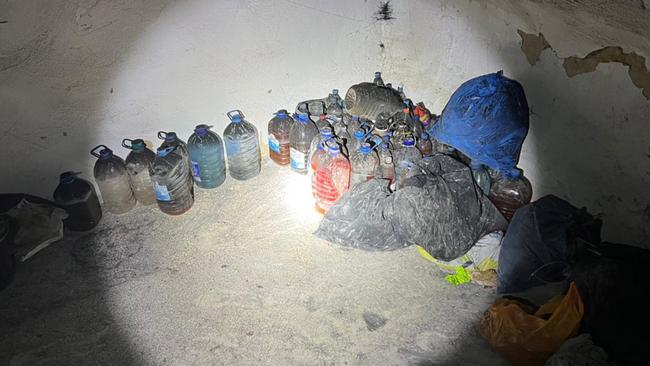
“Kherson residents were interrogated and brutally tortured,” the authorities said.
“During the inspection, torture law enforcement officers found objects that directly indicate signs of torture.”
Among the harrowing finds, authorities found gas masks, bottles of liquid which are now being analysed and wall markings from inmates were used to count the days the inmates were held.

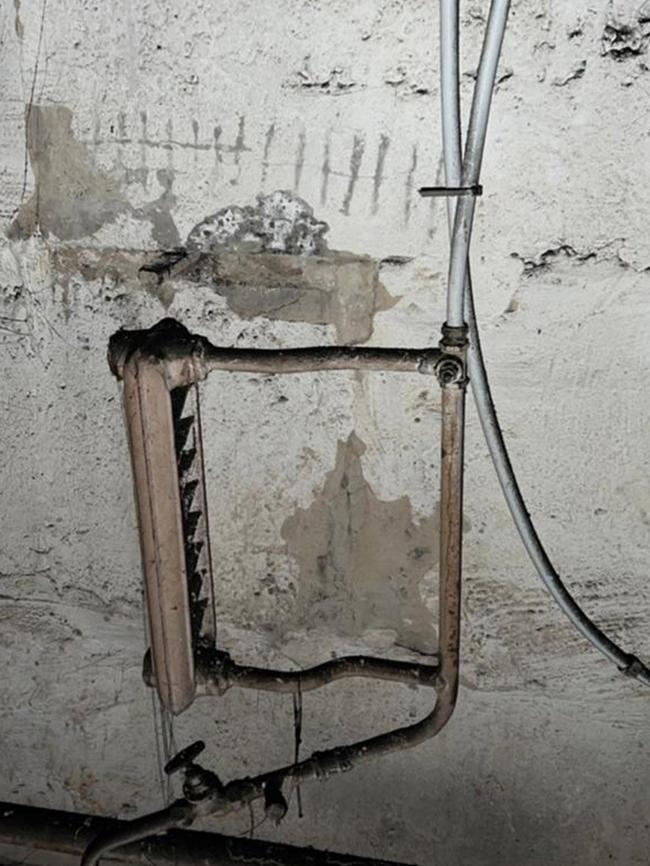
“Pray to God for us. God, give us strength. God, save and protect,” writing from a detainee on the wall of the hell chamber says.
There was also evidence that the Russians sought to clear away evidence before they fled Kherson.
“A series of investigative and operational measures is being carried out to document all the crimes of the occupiers, identify the culprits and bring them to justice,” the Ukrainian government said.
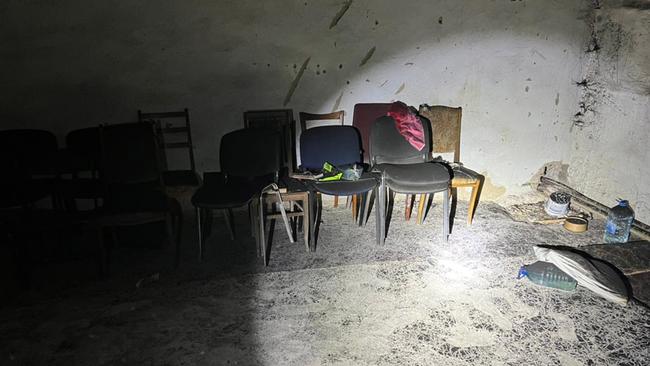
The gruesome discovery came as Russia staged a humiliating retreat from the provincial capital in the face of a powerful Ukrainian counteroffensive.
“Eleven places of imprisonment were discovered, four of which show signs of being torture chambers,” Ukrainian Minister of Internal Affairs Denys Monastyrskyi said.
“But we must understand that the search has only just begun, so many more torture chambers and burial places will be discovered.”
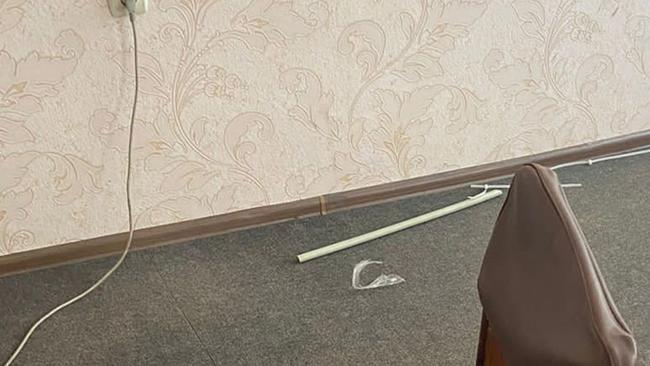
Survivor Anatoly Stotsky suffered weeks of abuse at the hands of Russian and pro-Russian forces in Kherson.
“I contemplated killing myself,” Mr Stotsky told AFP in an interview.
“But thinking about my family gave me the moral strength to endure it all,” the Ukrainian, who turned 50 in detention, said.
After the Russian army retreated last week following eight months of occupation chilling accounts are emerging of abuse, mistreatment and torture in Kherson.
Mr Stotsky, who spoke to AFP at his home in central Kherson, said he was arrested twice and held for weeks in detention where he was tied up, beaten and electrocuted by Russian and pro-Russian forces.
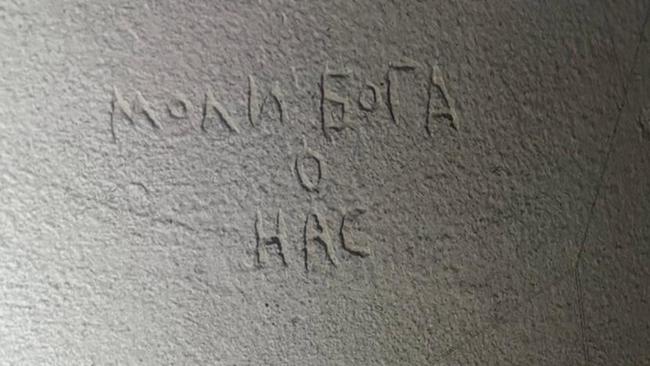
On April 25, the Russians came for Stotsky who was at home with his wife and three-year-old daughter.
“I gave them my weapon because they were threatening to kill my family,” he said.
The Russians put a hood over his head and took him to what he thought was a police station close to his home, before he was put in a cell and tied to a chair and interrogated by three or four people.
“They beat me with a truncheon and put a pistol or a rifle to my head,” he said.
An AFP team tried to access the four-storey building located on 15, Pylyp Orlyk Street, but was turned away.
“An investigation is underway,” a man at the entrance said, without providing further details.
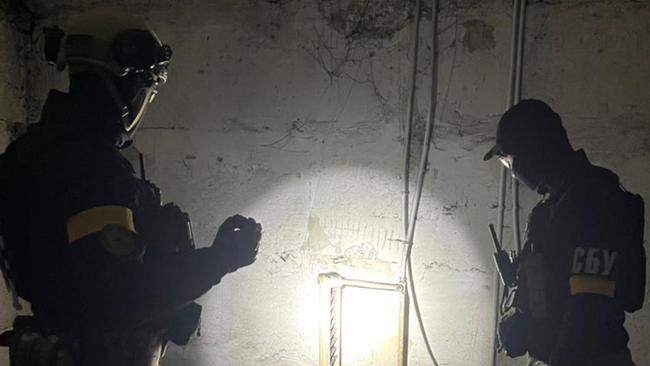
Meanwhile, fresh Russian strikes have hit cities across Ukraine on Thursday, in the latest in a wave of attacks that have crippled the country’s energy infrastructure as winter sets in and temperatures drop.
Repeated barrages have disrupted electricity and water supplies to millions of Ukrainians, but the Kremlin blamed civilians’ suffering on Kyiv’s refusal to negotiate, rather than on Russian attacks.
AFP journalists in several Ukraine cities said the latest strikes coincided with the first snow this season, after officials in Kyiv warned of “difficult” days ahead.
The capital’s regional administration said: “Four missiles and five Shahed drones were shot down over Kyiv,” referring to Iranian-made suicide drones Moscow has been deploying in swarms against Ukraine targets.
PRINCESS OF WALES VISITS UKRAINIAN MOTHERS
Catherine, Princess of Wales has showed her support for Ukraine as she met with displaced families and joined children for an art session.
The royal visited the Reading Ukrainian Community Centre on Thursday, where she heard first-hand about the support the centre is providing to those arriving in the UK as a result of the conflict in Ukraine.
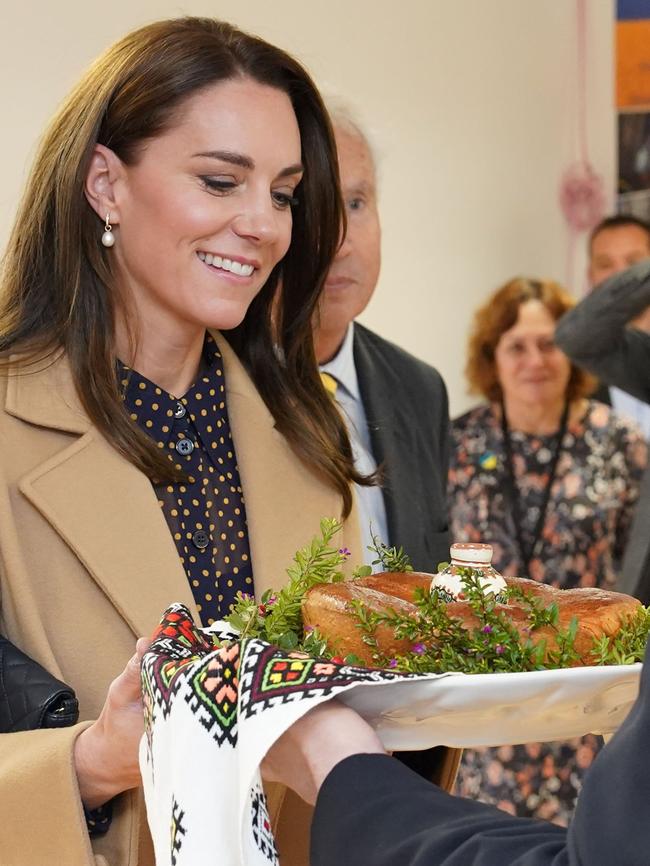

Dressed in the colours of the Ukrainian flag, she wore a navy and yellow shirt dress with a camel coat.
The 40-year-old was greeted with a traditional welcome of bread with salt at the centre, where volunteers told the princess about the services they provide.
The inspirational work of the Reading Ukrainian Community Centre is non-stop, and it’s changing lives!
— The Prince and Princess of Wales (@KensingtonRoyal) November 17, 2022
Providing practical advice on employment and housing, delivering educational classes for children and building social connections, the centre is at the heart of the community. pic.twitter.com/tn1Vrk846L
The mum-of-three then joined for an art session with children, with one of them sitting on her lap and posing for a sweet picture after writing “Kate I Love You” on a drawing.
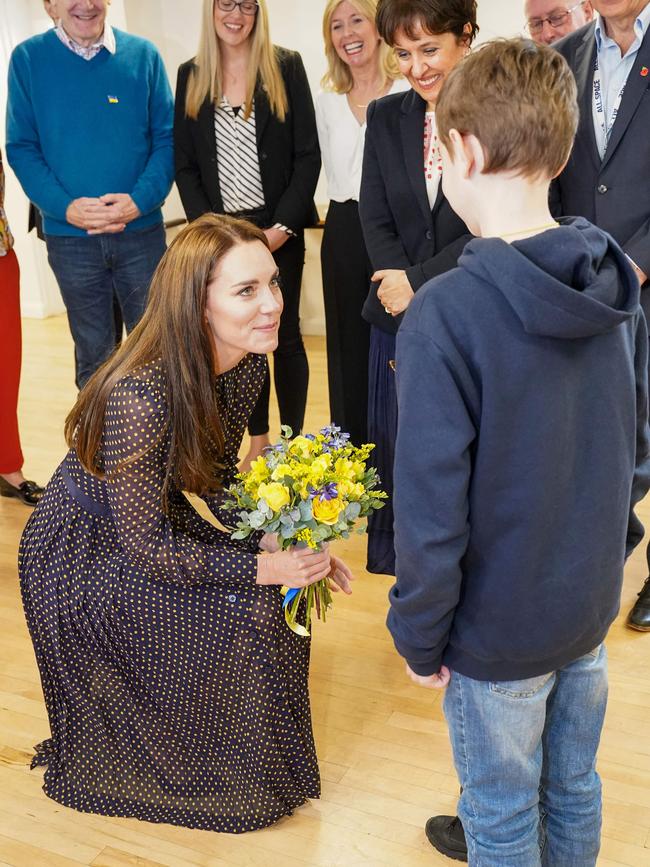
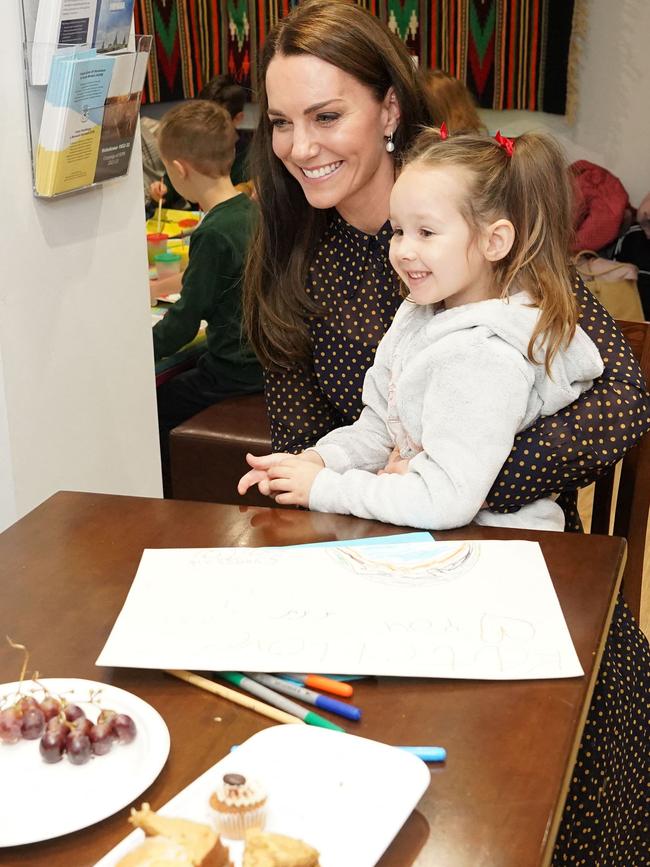
“The inspirational work of the Reading Ukrainian Community Centre is non-stop, and it’s changing lives!” the Prince and Princess of Wales posted on their official Twitter account.
“Providing practical advice on employment and housing, delivering educational classes for children and building social connections, the centre is at the heart of the community.”




